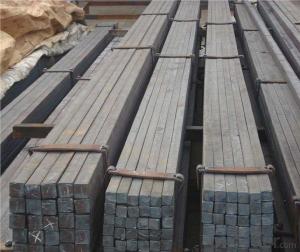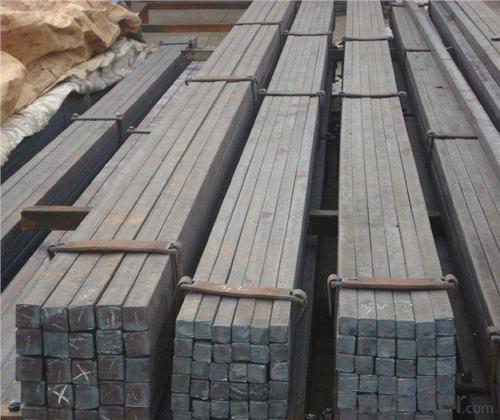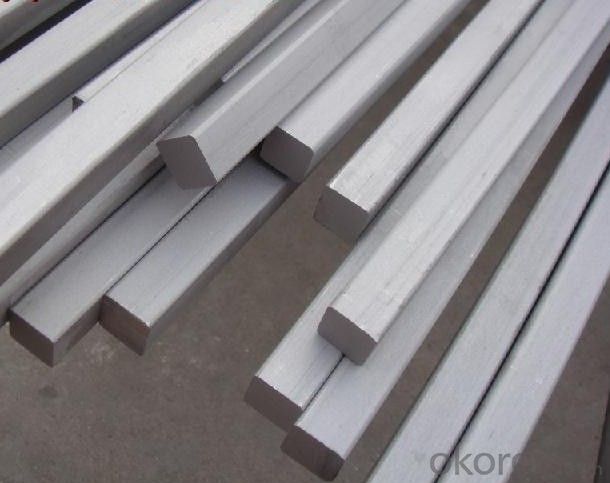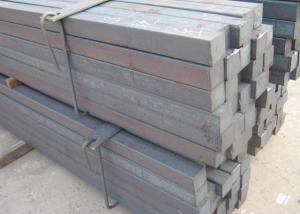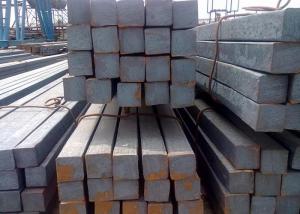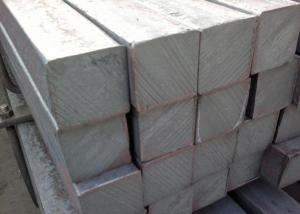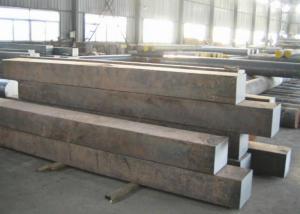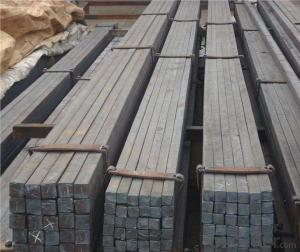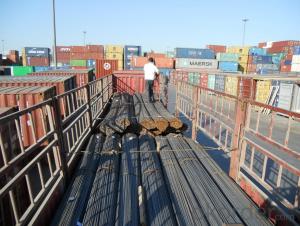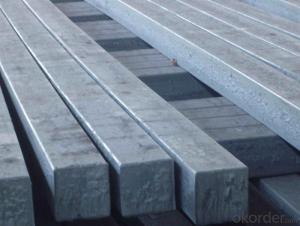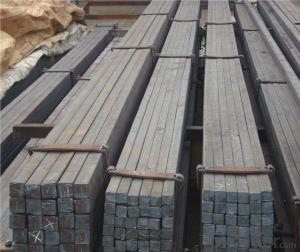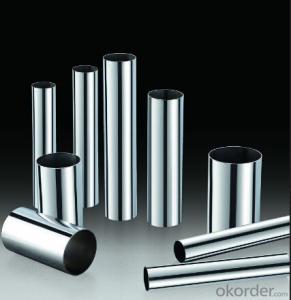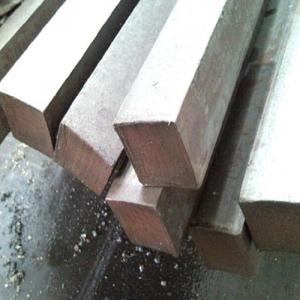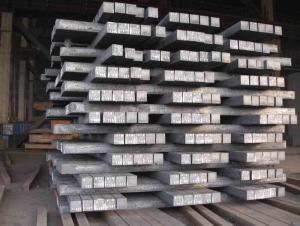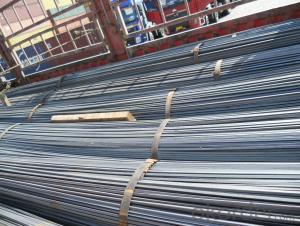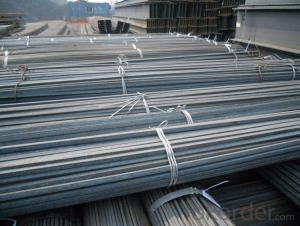Square Steel Cold Drawn with High Quality
- Loading Port:
- China main port
- Payment Terms:
- TT or LC
- Min Order Qty:
- 50 m.t.
- Supply Capability:
- 10000 m.t./month
OKorder Service Pledge
OKorder Financial Service
You Might Also Like
Product Description:
OKorder is offering Square Steel Cold Drawn with High Quality at great prices with worldwide shipping. Our supplier is a world-class manufacturer of steel, with our products utilized the world over. OKorder annually supplies products to European, North American and Asian markets. We provide quotations within 24 hours of receiving an inquiry and guarantee competitive prices.
Product Applications:
Square Steel Cold Drawn with High Quality are ideal for structural applications and are widely used in the construction of buildings and bridges, and the manufacturing, petrochemical, and transportation industries.
Product Advantages:
OKorder's Square Steel Cold Drawn with High Quality are durable, strong, and resist corrosion.
Main Product Features:
· Premium quality
· Prompt delivery & seaworthy packing (30 days after receiving deposit)
· Corrosion resistance
· Can be recycled and reused
· Mill test certification
· Professional Service
· Competitive pricing
Product Specifications:
Standard | GB | HRB400 | ||||||||
Diameter | 6mm,8mm,10mm,12mm,14mm,16mm,18mm,20mm, 22mm,25mm,28mm,32mm,36mm,40mm,50mm | |||||||||
Length | 6M, 9M,12M or as required | |||||||||
Place of origin | Hebei, China mainland | |||||||||
Advantages | exact size, regular package, chemical and mechanical properties are stable. | |||||||||
Type | Hot rolled deformed steel bar | |||||||||
Brand name | DRAGON | |||||||||
Grade | Technical data of the original chemical composition (%) | |||||||||
C | Mn | Si | S | P | V | |||||
HRB400 | ≤0.25 | ≤1.60 | ≤0.80 | ≤0.045 | ≤0.045 | 0.04-0.12 | ||||
Physical capability | ||||||||||
Yield Strength (N/cm²) | Tensile Strength (N/cm²) | Elongation (%) | ||||||||
≥400 | ≥570 | ≥14 | ||||||||
Packaging & Delivery of HRB400 Deformed Steel Bar:
Packaging Detail: products are packed in bundle and then shipped by container or bulk vessel, deformed bar is usually naked strapping delivery, when storing, please pay attention to moisture proof. The performance of rust will produce adverse effect.
Each bundle weight: 2-3MT, or as required
Payment term: TT or L/C
Delivery Detail: within 45 days after received advanced payment or LC.
Label: to be specified by customer, generally, each bundle has 1-2 labels
Trade terms: FOB, CFR, CIF
FAQ:
Q1: Why buy Materials & Equipment from OKorder.com?
A1: All products offered byOKorder.com are carefully selected from China's most reliable manufacturing enterprises. Through its ISO certifications, OKorder.com adheres to the highest standards and a commitment to supply chain safety and customer satisfaction.
Q2: How do we guarantee the quality of our products?
A2: We have established an advanced quality management system which conducts strict quality tests at every step, from raw materials to the final product. At the same time, we provide extensive follow-up service assurances as required.
Q3: How soon can we receive the product after purchase?
A3: Within three days of placing an order, we will begin production. The specific shipping date is dependent upon international and government factors, but is typically 7 to 10 workdays.
Images:
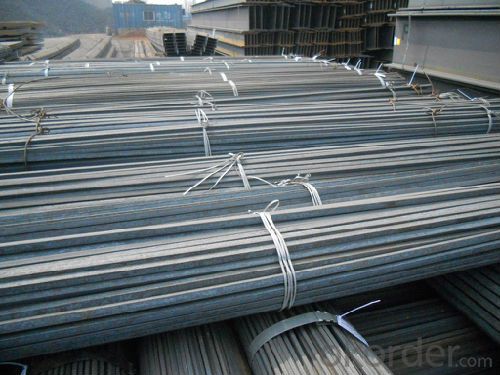
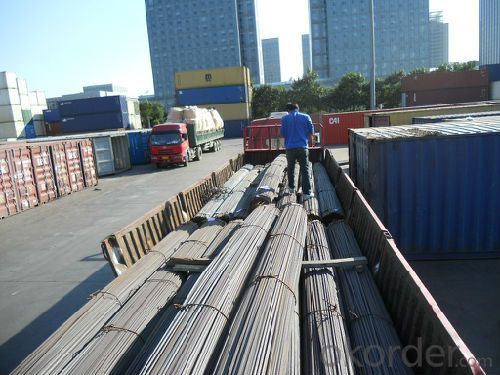
- Q: How do you use a steel square to determine the slope of a wheelchair ramp railing?
- Determining the slope of a wheelchair ramp railing using a steel square requires following a series of steps. First and foremost, it is essential to ensure the wheelchair ramp is securely installed and stable. To confirm its levelness, employ a level tool on the ramp surface. Subsequently, position the steel square vertically against the railing post, with the long side touching the post and the short side pointing upwards towards the sky. Securely hold the steel square against the post, ensuring its perfect vertical alignment without any inclination to either side. Now, direct your attention to the short side of the steel square and observe where it intersects with the ramp surface. This point of intersection determines the ramp railing's slope. For accurate measurement of the slope, employ a measuring tape or ruler to gauge the vertical distance between the intersection point on the ramp surface and the bottom of the steel square. Divide this vertical distance by the horizontal distance from the intersection point to the steel square post. The resulting ratio will represent the slope of the wheelchair ramp railing. For instance, if the vertical distance measures 6 inches and the horizontal distance measures 36 inches, the slope would be 6/36 or 1/6. Remember, it is of utmost importance to ensure the steel square remains perfectly vertical and that the ramp is level before attempting to calculate the slope. Additionally, it is always advisable to seek guidance from a professional or expert to guarantee accurate measurements and compliance with safety standards.
- Q: Can a steel square be used for stair railing installation?
- The use of a steel square for stair railing installation is not recommended. A steel square, also referred to as a framing square or carpenter's square, is primarily intended for measuring and marking right angles in carpentry and framing work. Although it can be helpful for other construction tasks like making cuts or checking for squareness, it is not designed or suitable for the installation of stair railings. Installing stair railings requires specialized tools and hardware that are specifically engineered for this purpose. These include railing brackets, balusters, and handrail fittings, which are designed to meet safety and building code standards, ensuring proper installation and long-lasting durability. Therefore, it is advisable to utilize the appropriate tools, materials, and techniques specifically designed for successful and safe stair railing installation.
- Q: What are some common uses for a steel square in timber framing?
- Some common uses for a steel square in timber framing include measuring and marking angles, determining squareness and straightness of timber joints, laying out cuts and notches, checking and transferring measurements, and ensuring accurate and precise construction of timber frames.
- Q: How do you use a steel square to find angles for coping cuts?
- To determine angles for coping cuts, there are several steps you should follow: 1. Begin by identifying the specific angle you need to cut, whether it is a corner angle or a miter joint angle. 2. Position the steel square on the workpiece, ensuring that one side of the square is aligned with the material's edge. 3. Rotate the square until the opposite side is aligned with the adjacent edge or surface. This will create a corner where the two material edges meet. 4. Once the square is aligned correctly, use a pencil or scribe to mark the angle on the workpiece by drawing along the square's edge. 5. Remove the square from the workpiece and extend the marked line as necessary. 6. Finally, execute the coping cut along the marked line using the appropriate tool, such as a coping saw or jigsaw. By utilizing a steel square to determine angles for coping cuts, you can accurately transfer the angle from one material piece to another, ensuring a precise fit for your project. It is crucial to verify your measurements and make any required adjustments prior to making the final cut.
- Q: Can a steel square be used for plumbing pipe layout?
- Yes, a steel square can be used for plumbing pipe layout. A steel square, also known as a framing square or an engineer's square, is a versatile tool that can be used for various layout and measurement tasks in construction and plumbing. It can help ensure accurate angles and straight lines, making it useful for laying out plumbing pipes in a precise manner.
- Q: How do you use a steel square to check the flatness of a surface?
- To use a steel square to check the flatness of a surface, place the square on the surface and observe if there are any gaps or spaces between the square and the surface. If the square lays flat and there are no gaps, then the surface is considered to be flat.
- Q: How do you use a steel square to determine the angle of a roof pitch?
- To determine the angle of a roof pitch using a steel square, you would align the long edge of the square with the bottom edge of the roof and the tongue (shorter edge) with the slope of the roof. Then, you can read the angle measurement marked on the square to determine the roof pitch angle.
- Q: Can a steel square be used for checking the squareness of cabinets?
- Yes, a steel square can be used for checking the squareness of cabinets. Steel squares are commonly used in woodworking and carpentry for checking the accuracy of right angles and determining squareness. By placing the steel square against the corners of the cabinet, you can easily determine if the cabinet is properly square or if adjustments need to be made. The straight edges of the steel square provide a reliable reference for checking the squareness of cabinets and ensuring their proper alignment.
- Q: What are the different parts of a steel square?
- A steel square, also known as a framing square or carpenter's square, consists of several parts that are essential for its functionality. The main components of a steel square include: 1. Blade: The blade is the long, flat metal surface on one side of the square. It is usually marked with measurements and angles, allowing for precise measurements and layout work. 2. Tongue: The tongue is a shorter section of metal located at the end of the blade. It is perpendicular to the blade and is typically used for marking and measuring short distances. 3. Heel: The heel is the wider end of the steel square, opposite to the tongue. It provides stability and acts as a reference point for making square cuts and angles. 4. Face: The face is the flat part of the square that is perpendicular to the blade and tongue. It is commonly utilized for drawing straight lines and checking the squareness of corners. 5. Fence: The fence is a raised edge along the face of the square. It helps in holding the square firmly against the workpiece, ensuring accurate measurements and straight lines. 6. Graduations: Graduations are markings or measurements found on the blade and face of the square. They allow for precise measurements of distances, angles, and cuts. 7. Squaring and Angle Scales: These scales are usually located on the face of the square and are used for measuring angles other than 90 degrees. They come in handy for marking angles, bevels, and complex cuts. 8. Rafter Tables: Some steel squares feature rafter tables, which are tables or charts engraved on the blade. These tables provide information and calculations for various roof framing applications, such as determining rafter lengths and angles. Overall, the different parts of a steel square work together to provide accuracy, stability, and versatility for various carpentry and layout tasks.
- Q: Can a steel square be used for measuring angles?
- Yes, a steel square can be used for measuring angles. A steel square, also known as a framing square or carpenter's square, is a versatile tool that can be used for various measurements and layout tasks, including measuring angles. It typically has a long arm and a shorter perpendicular arm that forms a right angle. By aligning the square with the object or surface being measured, it can be used to determine the angle between two lines or surfaces. However, it is important to note that a steel square only provides approximate measurements and may not be as accurate as specialized tools like a protractor for precise angle measurements.
Send your message to us
Square Steel Cold Drawn with High Quality
- Loading Port:
- China main port
- Payment Terms:
- TT or LC
- Min Order Qty:
- 50 m.t.
- Supply Capability:
- 10000 m.t./month
OKorder Service Pledge
OKorder Financial Service
Similar products
Hot products
Hot Searches
Related keywords
